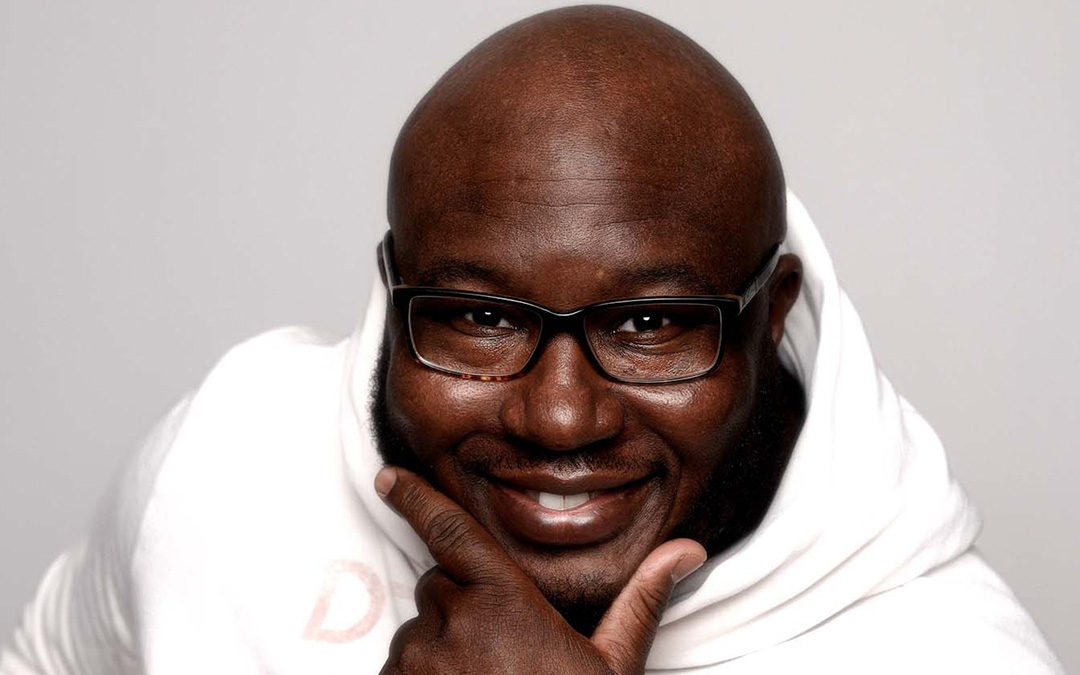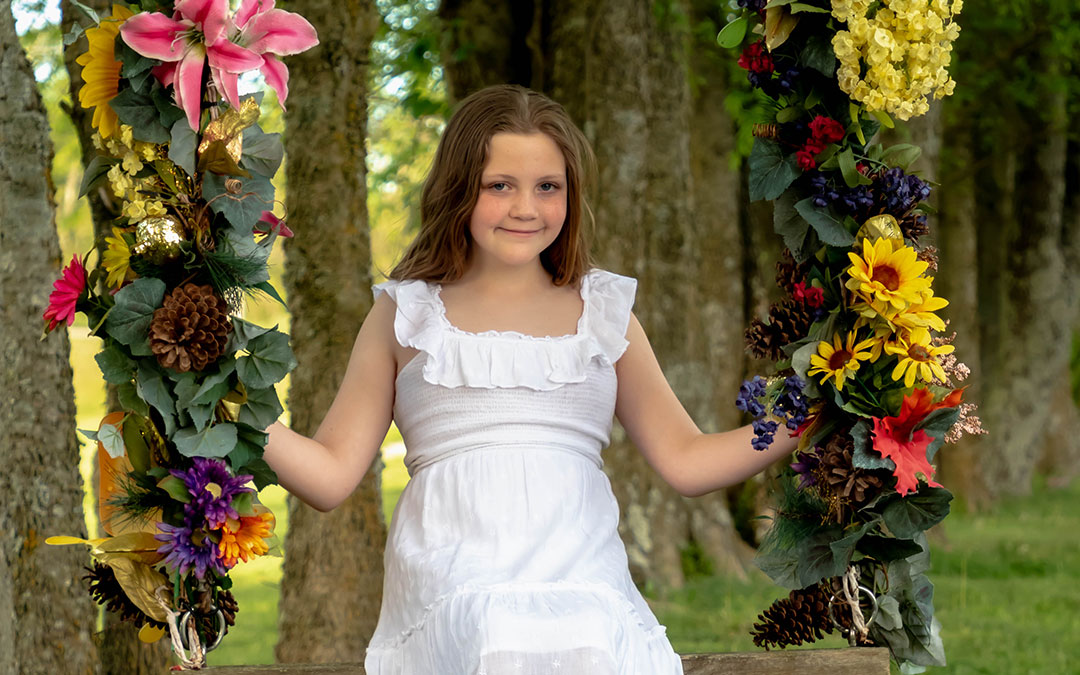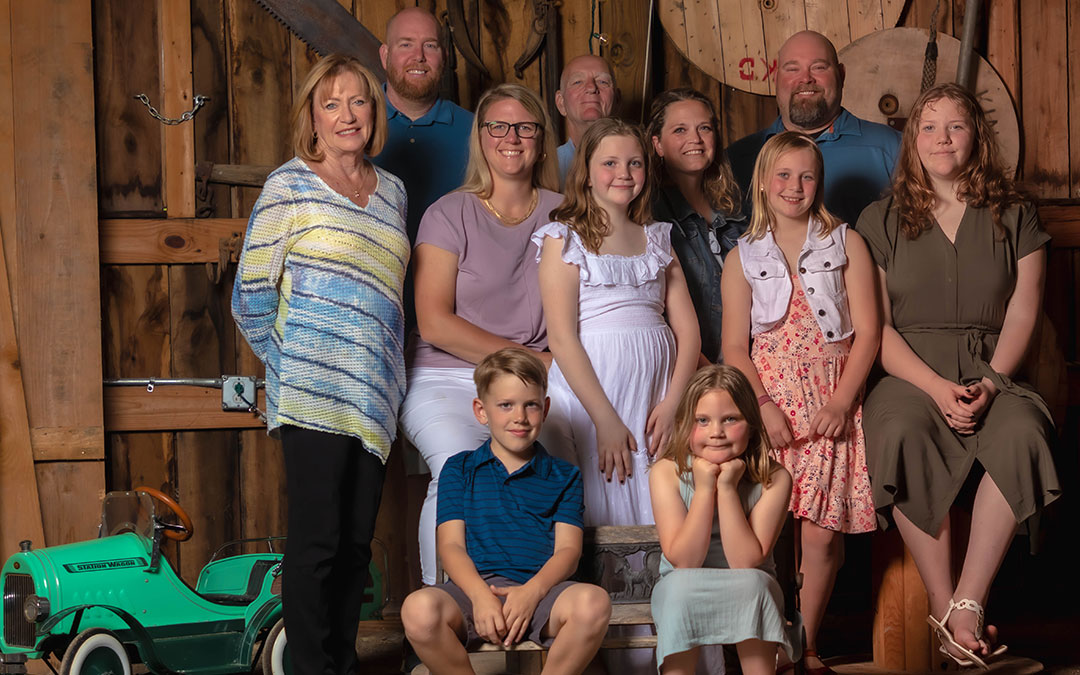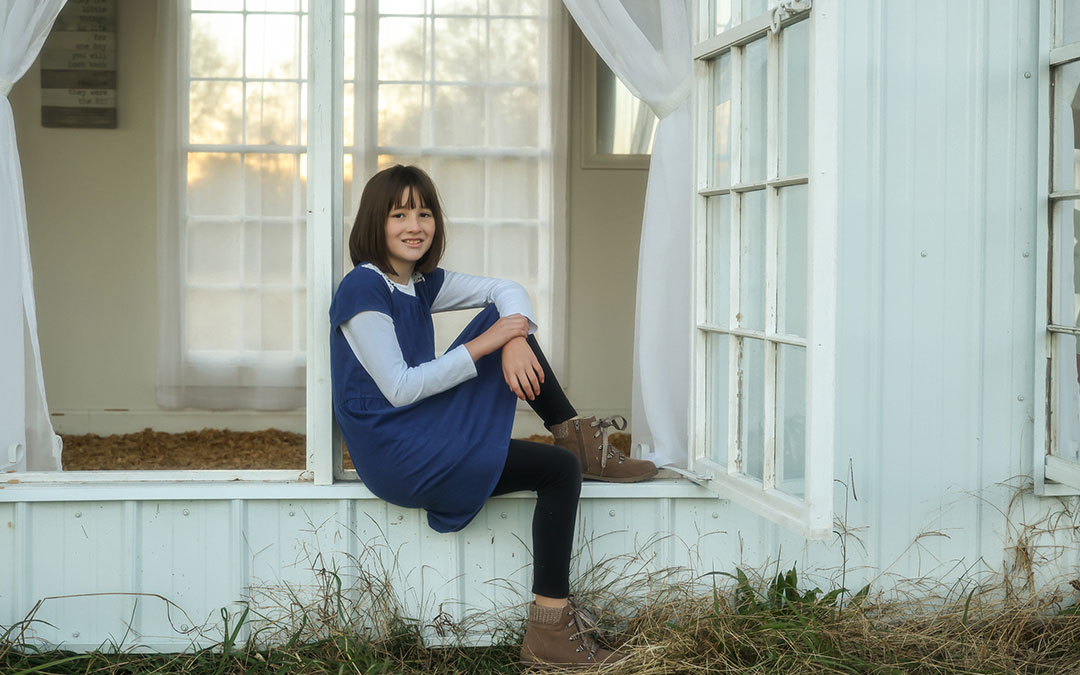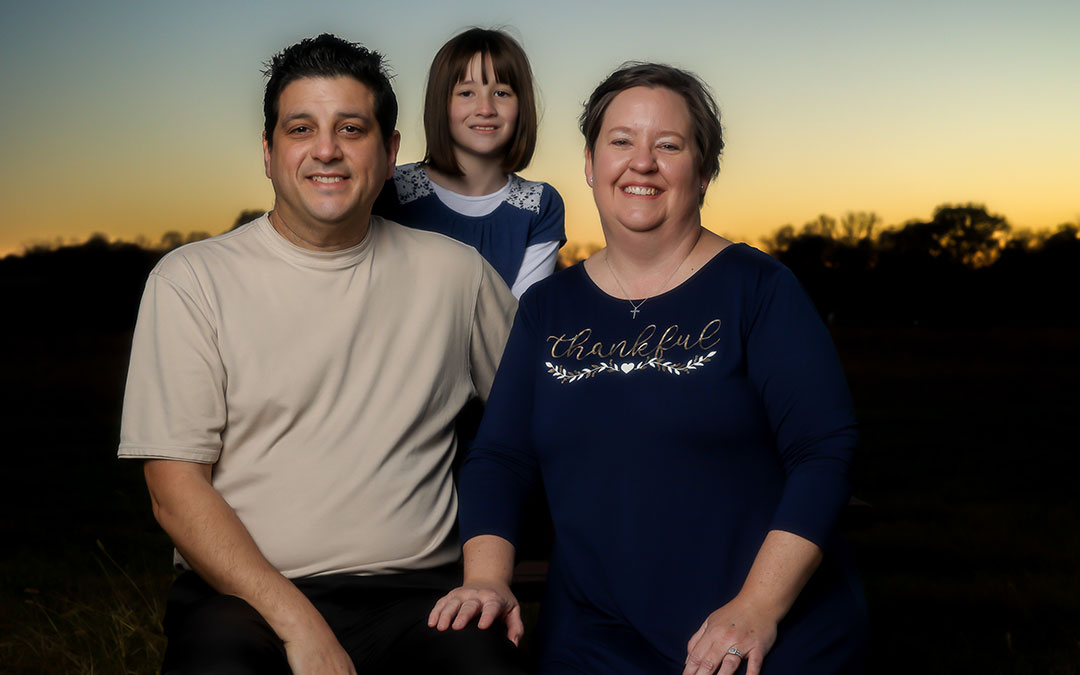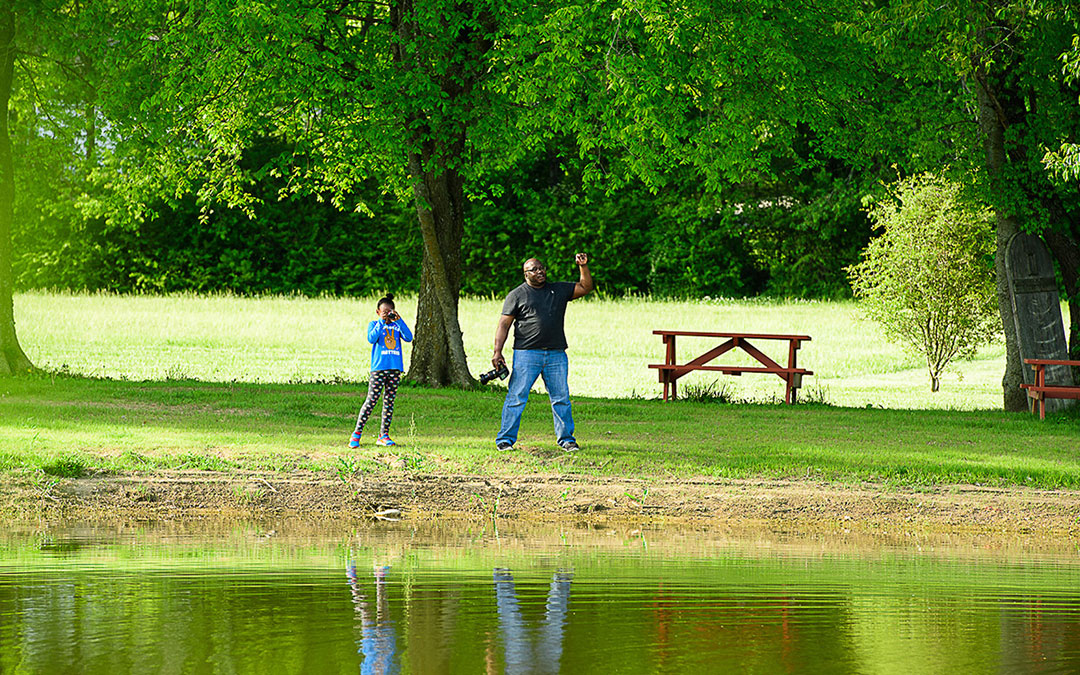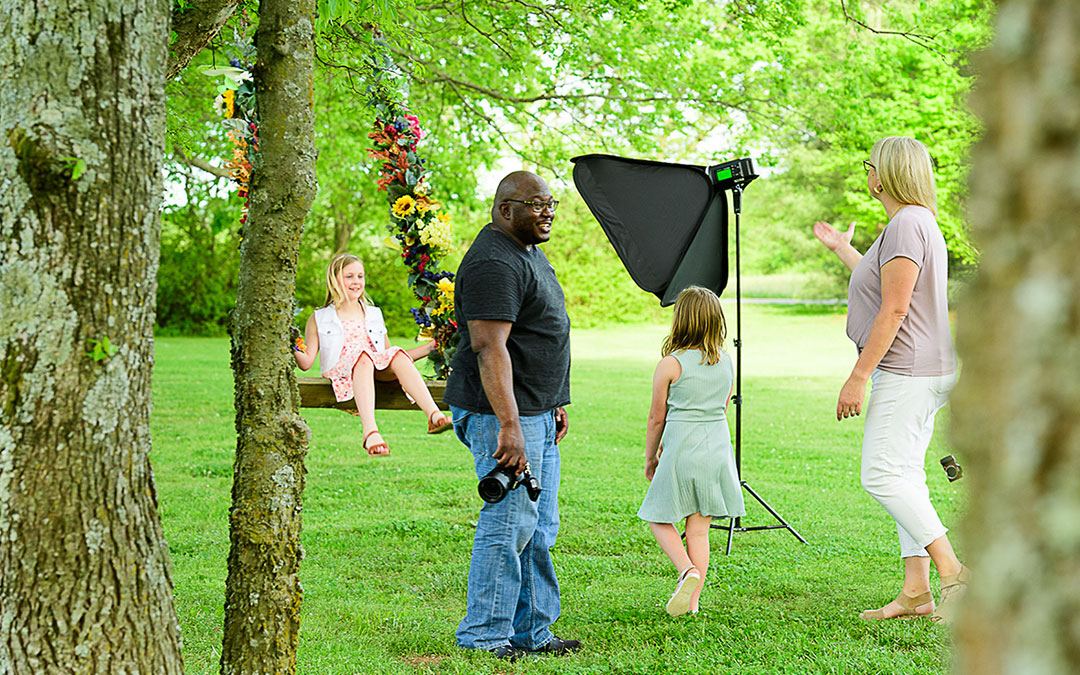The South 40 Creative Spotlight showcases creative talent we love to work with! Discover some of our favorite photographers, videographers and more!
This month’s Creative Spotlight features beauty and branding photographer Otis Robertson. Although his introduction to photography came nearly by accident, his flair for eliciting confidence and poise is certainly a gift. His faith as an ordained minister flows through his work, and his conviction to serving others is clear in how effortlessly he tells his subjects’ stories. Join us as Otis communicates his approach to photography, admits that he prefers not to call himself a “professional” and shares what makes South 40 an absolute gift to creatives of all abilities.
How did your journey to becoming a photographer begin? What drew you to the craft and were there any pivotal events in your decision to pursue it as a profession?
In a way, I became a photographer by accident. As part of my ministry, I was asked to create inspirational videos for our online community. Totally out of my element, I turned to YouTube for video instruction, which also opened the world of photography. I decided to purchase my first camera and started taking photos of my kids playing sports. I will admit, my first photos were BAD, but over several years I slowly improved as I began to take photos of friends and family. As is the case of many creative professionals, word of mouth is a powerful marketing tool, and I am blessed to have had the opportunity to serve people by taking their pictures professionally for 5 years now.
As an ordained minister, how does your faith impact your role as a photographer? Some Christians mention how God sees beauty in everything He created—does your faith help you to reveal the beauty in your subject?
My faith is lived through my service, and that is what I love most in life. This commitment to service dictates how I present my photography, and I love to speak life into my work. When my clients are nervous, I tell them “I’ll do the work, you just be you.” I show them what the camera has revealed, and when they see what they look like through the camera lens, their confidence immediately grows. I simply love to see people exceeding, thriving, and being their best selves. That is truly what I want to capture in my photography.
Your subjects are bursting with confidence. Your clients are sometimes overwhelmed—in a good way—when they see themselves in your photos. How do you prepare yourself and them for a beauty/professional shoot?
The funny thing is that I am a total introvert; it feels awkward to direct my clients during a shoot. Additionally, I struggle to call myself a “professional” photographer, especially when I see other professionals and am amazed by the quality of their work. However, early in my ministry career, someone told me that I was obviously an extrovert. When I mentioned it to my wife that evening, she explained that in both my ministry and photography business, my passion enables me to flip the switch from being a natural introvert to the extrovert my subjects need. This passion is obvious to my clients, giving them the confidence to follow my directions. When I show confidence during the shoot, they become more comfortable and confident themselves. Their story is easy to tell in this environment.
How do you prepare for a branding shoot—what kind of details do you ask of a branding client?
To prepare for a branding shoot, I ask questions like: Who are you as a business and what message are you presenting? What are your goals—a new market, expanding your reach, gaining market share? I want to accurately tell my client’s brand story so they can reach those goals.
I was presented with an opportunity to shoot my first branding session last summer (2021). In studying about branding photography, I learned that it isn’t about the photographer, but about the client. With this mindset and my desire to serve others, I found an easier transition despite my intimidation of professional branding photographers’ work, tackling my doubts and fear. I also knew I needed to upgrade my website and social media to reflect the photography style I want to book, so I cleared all my previous work to reflect the work I am doing in 2022.
With portrait photography, you have the freedom to create a variety of ambiences with lighting, filters & backgrounds. What goes into producing an outstanding portrait shoot?
With portrait photography, I usually start by asking my clients “What is your story?” I want to know their vision for the photo shoot—what message they want to convey with their photos. I get some details about what is important to them, like what they would like to wear. This is important in choosing a location, as some colors and fabrics simply won’t work in every condition. If they didn’t consider these details (and most don’t), I ask what the reason is for having their photo taken. Perhaps they are celebrating a milestone or announcing their graduation or promotion. This will help me find the right location to promote the story their photos will tell or represent their unique personality.
What are some of your favorite pieces of equipment—those items which you find crucial to your success?
When I first started down my path to becoming a “professional” photographer, I had just a few pieces of photography equipment. I purchased a Canon 80D, which I recently upgraded to the Canon R6. I used to shoot with a speed-lite before purchasing the Godox AD600BM. I liked it so much that I bought a second one. I keep the RF 50mm 1.2 on my camera, periodically changing out for an 85mm or 24-105mm. I had an opportunity to shoot with the RF 70-200mm 2.8 during a corporate event and fell in love with it.
With all the gear that I can have, one of my favorite pieces is my portable dressing room. Being able to provide my client a place to change quickly, comfortably, and privately just adds another level of service for them. And of course, it opens all sorts of possibilities for outside photo shoots.
You have created some gorgeous shots at South 40—what advice do you have for photographers booking there for the first time? What makes it so special?
South 40 is one of my favorite places to shoot for many reasons, but what makes it most special is Ann. She invited me to take a tour and showed me so many options for my shoots. Social media doesn’t even begin to show what South 40 really offers. I appreciate the opportunity to see the individual locations from the beginning, so I can offer the right location for my clients. I can plan based on what is available and take into consideration my clients’ needs, like clothing, number of subjects, and purpose of pictures. I establish trust with them that the shoot will run smoothly because I have already created a plan.
South 40—and more specifically Ann’s approach to utilizing the space—has helped me to see a vision for my shoots. I have never been anywhere like South 40, and it helps photographers step out of the rut of creating one or two looks. I can offer an experience for my clients. Ann has created art for creatives, and it is not just South 40 as a location, it is her support to me as a professional. She has an impressive commitment and dedication to photography as a craft, and this is part of the experience you find at South 40.
The photography business is more than just taking photos. What challenges have you experienced and what advice would you share with newcomers?
One of the hardest parts of establishing my photography business is the actual business planning. Although I heard about SquareSpace and dabbled in social media, I had no idea how to build a website or to market myself. I was simply a “shoot & burn” photographer and doing all that work without really being able to charge for it nearly burned me out.
To help me improve this side of my photography business, I bought KT Merry’s “The Abundance Plan,” and a few other courses on the business side of photography. I also pay close attention to professionals who share insight into the organizational side of their photography business. The bottom line is this: if you continue to shoot pictures, you will get better. But if you want to build a photography career, you need to invest in your business. You do your business harm in the long run by not paying attention to the finances!
Some advice I would give newcomers is to look for ways to add value to your service. For example, I found that when I simply gave clients access to an online photo album, they didn’t utilize their photos. But when I provide prints or a Look Book, I have added value to my craft. Customers show others and help build my reputation and business. And lastly, don’t take pictures just to make a profit. Know what you are trying to do, find your photography niche, and focus on being the best at what you do!
Connect with Otis:

